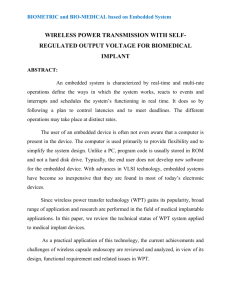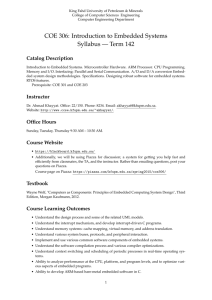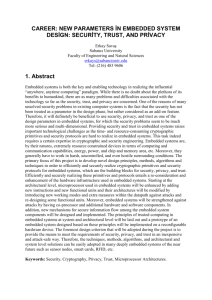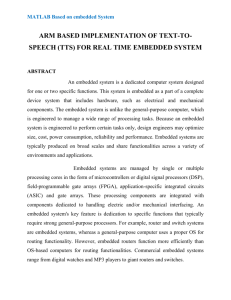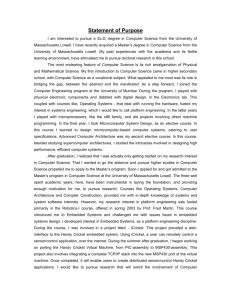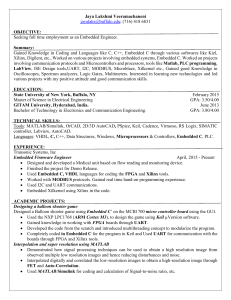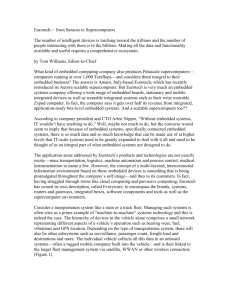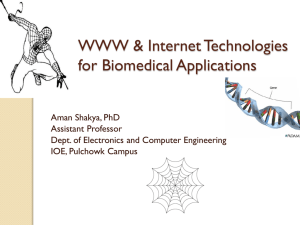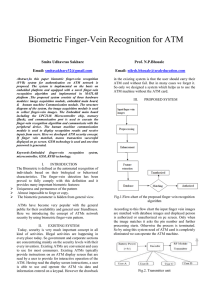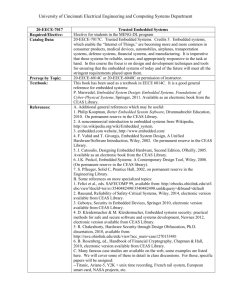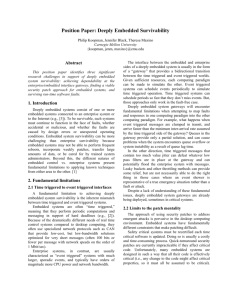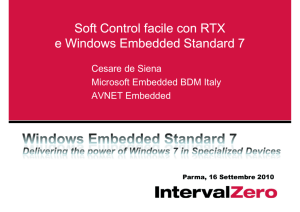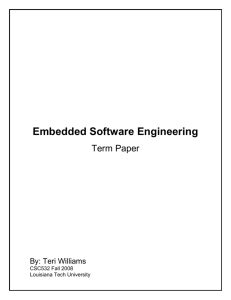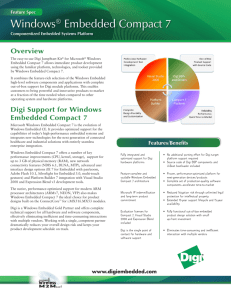5. Error correction algorithm for high accuracy bio
advertisement
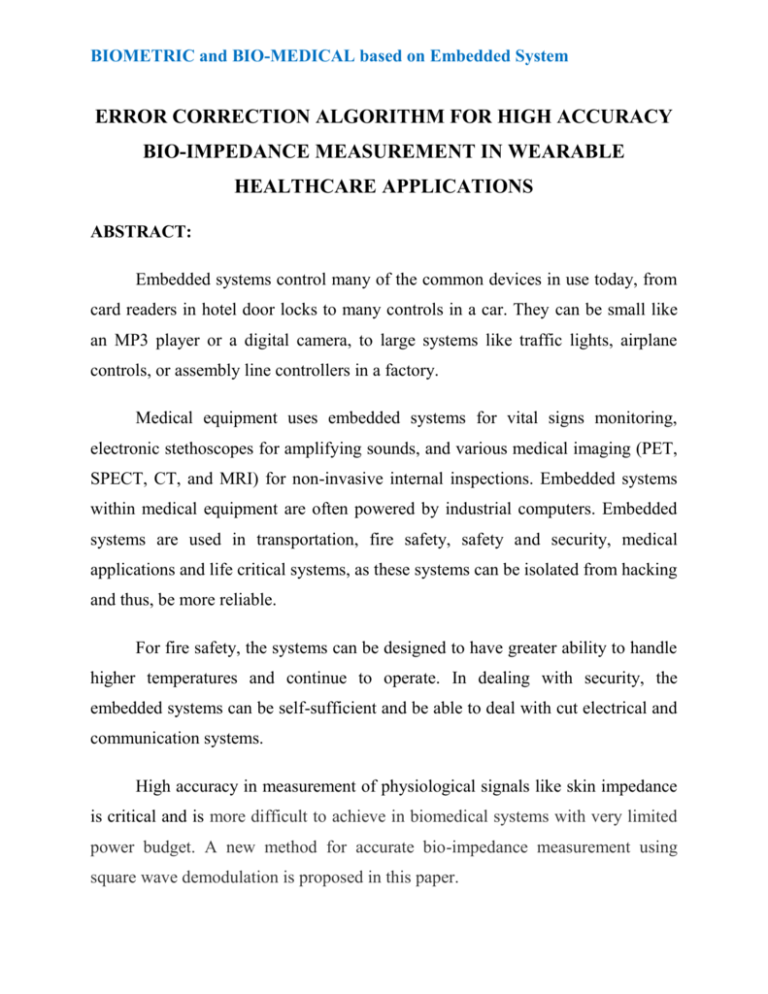
BIOMETRIC and BIO-MEDICAL based on Embedded System ERROR CORRECTION ALGORITHM FOR HIGH ACCURACY BIO-IMPEDANCE MEASUREMENT IN WEARABLE HEALTHCARE APPLICATIONS ABSTRACT: Embedded systems control many of the common devices in use today, from card readers in hotel door locks to many controls in a car. They can be small like an MP3 player or a digital camera, to large systems like traffic lights, airplane controls, or assembly line controllers in a factory. Medical equipment uses embedded systems for vital signs monitoring, electronic stethoscopes for amplifying sounds, and various medical imaging (PET, SPECT, CT, and MRI) for non-invasive internal inspections. Embedded systems within medical equipment are often powered by industrial computers. Embedded systems are used in transportation, fire safety, safety and security, medical applications and life critical systems, as these systems can be isolated from hacking and thus, be more reliable. For fire safety, the systems can be designed to have greater ability to handle higher temperatures and continue to operate. In dealing with security, the embedded systems can be self-sufficient and be able to deal with cut electrical and communication systems. High accuracy in measurement of physiological signals like skin impedance is critical and is more difficult to achieve in biomedical systems with very limited power budget. A new method for accurate bio-impedance measurement using square wave demodulation is proposed in this paper. BIOMETRIC and BIO-MEDICAL based on Embedded System An error correction algorithm has been derived from the analysis of a generic impedance model with multiple poles, which reduces the estimation error in square wave demodulation from 9.3% to 1.3% for a simple tissue model. Simulation results in MATLAB using ideal RC values show an accuracy of <; 0.14% for single pole and <; 0.67% for two pole RC networks. Measurements from saline phantom solution gives an accuracy <; 0.72%. The results indicate that the algorithm can be used as a post processing technique for error correction or even incorporated into wearable signal monitoring SoCs since modulation and demodulation using square waves consumes less power compared to sine waves PROPOSED SYSTEM: In this paper, we are going to implement this project in medical application. The main aim of this project is we can see our heart beat rate in mobile phone. Initially the Recording electrode is placed in chest. Recording electrode sense the heart beat signal and isolation amplifier amplify the signal and send the signal to the microcontroller and this rate can be transmit via Bluetooth to the user mobile phone. BIOMETRIC and BIO-MEDICAL based on Embedded System BLOCK DIAGRAM: INSTRUMENTAT -ION AMPLIFIER ISOLATION AMPLIFIER RECORDING ELECTRODE LOW PASS FILTER SIGNAL LEVEL CONDITIONER HARDWARE REQUIREMENTS: MICROCONTROLLER ECG BLUETOOTH UART ADC MOBILE BLUETOOTH MICRO CONTROLLER SIGNAL LEVEL CONVERTER BIOMETRIC and BIO-MEDICAL based on Embedded System SOFTWARE REQUIREMENTS: KEIL COMPILER PROTEUS SOFTWARE



